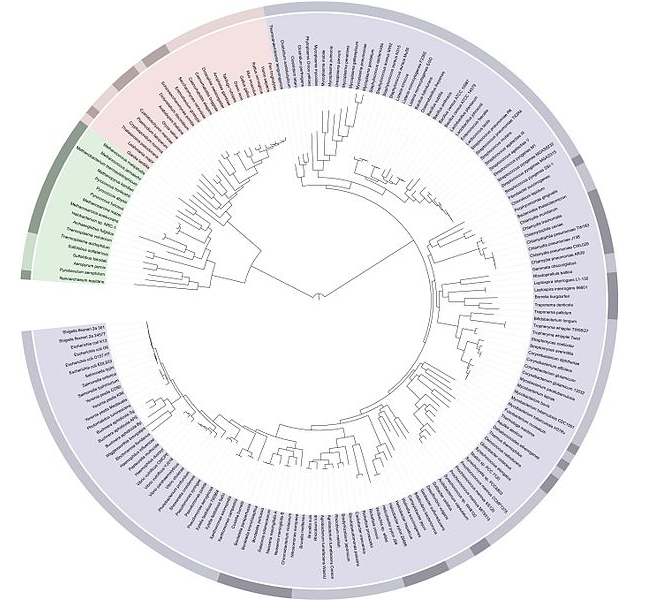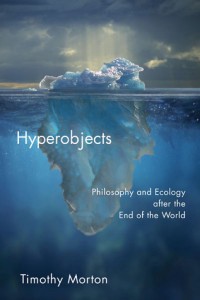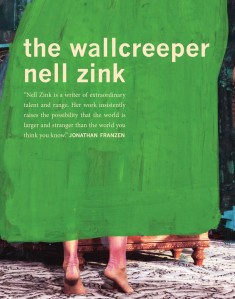Craft
The Slow Apocalypse and Fiction

1 — Descending into the Substrata

The Sonic Acts Geologic Imagination Festival (Amsterdam, February 26 — March 2) as I experienced it was less festival than upbeat funeral march conducted in bright light, set to a soundtrack of experimental music, and festooned with colorful Power Point graphics like ornaments on a post-apocalyptic Christmas tree. According to the pocket guide, a fundamental starting point for the festival “is the thesis that we live in a new geological epoch: the Anthropocene. Human activity has irreversibly changed the composition of the atmosphere, the oceans, and even the Earth’s crust…humans have become a force on a geological scale.” The festival brought together “scientists, philosophers, theorists, artists, and researchers” to talk about ways to rethink “our attachments to the world, our concepts of nature, culture and ecology.”
To experience this in person for more than two hours at a time is a sobering experience, since you’re entering a place that’s trying to stare directly at the supernova known as global warming. You oscillate from finding it worthwhile to wondering if you’re inviting depression and anxiety to take up residence in your brain — and for what purpose? To tell people what they already know? Except, in my case participation consisted of the even more useless context of a presentation entitled “AREA X: The Fictive Imagination in the Dusk of the Anthropocene,” about what types of fiction are likely to go extinct before we do. This included thoughts about reactionary post-apocalyptic fiction, revisiting the way we write about our fellow animals, and interrogating the inefficiencies of so-called “smart” tech. If you were standing in a hideous post-apocalyptic landscape, would you want me to tell you a story or would you just want me to shut up long enough so you could convert me into edible protein?
If you were standing in a hideous post-apocalyptic landscape, would you want me to tell you a story or would you just want me to shut up long enough so you could convert me into edible protein?
Still, it was hard to be too glum, with my family in attendance as a slideshow of my favorite wilderness places ran on the screen behind me and I muttered on about: deliberately misunderstanding philosophy as a fictive strategy; how even in a Terence Malik film about the New World, the lack of biodiversity in the backdrop is a kind of lie we tell ourselves (it was always this way, except it wasn’t); and suggested mash-ups of Girls and The Walking Dead as a way to bring some frisson of the shock of the new. My grandson drew me as a bearded smudge and my audience as cats. Later, back at our daughter’s place, he surprised us with the smiling piles of plastic skulls he’d arranged for us, promptly followed by marathon bouts of watching Adventure Time (which seems rather more on-point than I understood then).
In this context perhaps you can forgive me for wondering at times if the festival was in the least bit important or was instead impotent and useless, a death ride at the end of a death ride, all of us having arrived on death planes and going home on death planes, and in between trying to figure out a life based on the certain knowledge of impending doom. I say “wondering” because anyone invested in science, and thus in noncontroversial concepts like gravity and inertia, knows we’re all just atoms anyway and forever about to return to atoms.
Yet any qualms I had about what could be accomplished, or at least articulated, dissolved when I explored the Sonic Acts book The Geologic Imagination. This fascinating tome represents an act of radical imagination, an attempt to wrench our thinking out of the same tired old tracks. There’s heft to the book, and perhaps the juxtaposition of cutting edge content with solid, sturdy precision in the object reassures as well. Things that matter in the world have weight. Is that too human a reaction in these post-human times? I don’t know. I don’t care. But I do care about how the book and festival made me directly confront themes and issues that had previously come out organically in my fiction. When that happens, the way forward changes irrevocably.
2 — A Chronicle of Our Science-Fictional Present

Aral Sea
The cover and immediate interior of The Geologic Imagination are dominated by photos of the barren Aral Sea, destroyed by the Soviets and their successors for the sake of cotton crops — an ecosystem snuffed out by a fanatical devotion to ultraorthodox ideologies — and the photographs within are also alive with the ways in which human beings still try to grapple with our own destructiveness and understand the humiliations of our particular moment. Images from abandoned industrial zones in Russia might in another context scan as disaster porn, but here, foregrounded by the idea of viewing life at “Earth magnitude,” are oddly melancholy yet redemptive. Visual elements like “Human Nonhuman,” mostly blurred photos, require the full festival presentation to appreciate, but then you turn the page and something like Kurt Hentschlager’s “Sublime Landscapes 3.0” confronts you. Fifteen pages of texture triptychs from his recent audiovisual installation “Measures” filter nature “through communication channels and media.” This focus on environments in juxtaposed layers of strata is interesting even without the audio component and begins to hint at fresh ways of seeing the detail-work that goes into our world.
The essays and interviews in The Geologic Imagination are similarly provocative, smart, and uninclined to engage in melodrama. For example, rather than exist in the realm of the polemic or the abstract, Liam Young and Kate Davies traveled the world charting the path of the components that we use to create smart phones. Young and Davies, interviewed by BLDGBLOG’s Geoff Manaugh, run the Unknown Fields Division, a “nomadic design studio” that explores “unreal and forgotten landscapes.” That could be double-speak for something insufferable, but it’s not. Their account of trekking “back up the global supply chain of consumer electronics” is not just fascinating and necessary but almost revelatory in its devotion to specific detail and understanding the consequences of that detail. (If you’re reading this on a smart phone, don’t worry — your minor discomfort will end…now.)
Essays like “Poetry and Bookkeeping” by Michael Nelland examine the role of the imagination in science, making by association a link between science and philosophy. The visual representation of a “tree of life” with Mankind at the top — sometimes mistakenly thought to have been endorsed by Charles Darwin — is juxtaposed with a “wheel of life” that shows human beings as just a creature between the common chimpanzee and the Norwegian rat, with no special significance. If the decentralization of humanity’s place at the center of the universe begun by Copernicus had found its way to the wheel instead of the tree, would our cultures, our society, our science, look fundamentally different?

Tree of Life
Another essay, Timothy Morton’s “Human Thought at Earth Magnitude” surprised me in the giddiness of its tone and shifting emphasis. The most interesting parts involve an argument that ascribes imagination and intent to the decision-making displayed by social insects and other animals. “It’s been shown,” Morton writes, “that ants, while climbing up little ladders, look around them rather than walk up automatically. They weigh options,” which suggests they “anticipate and assess situations,” and in other cases “rats experience regret” while “bees build mental maps to find their way home.” Morton compares these findings to, for example, an architect’s decision-making process, suggesting similarities. In putting forward this evidence, Morton asserts that too many scientists have gone into study of animal behavior already believing they knew the cause and effect: “Scientists are now beginning to figure out something we’ve known in the humanities and arts for ages and ages. Namely that you are entangled in what you are seeing.”
Morton’s argument is a way of saying that if you believe this kind of animal behavior is automatic, then what about manifestations of the human imagination? Are they perhaps being influenced by factors other than free will? This is an important thought experiment given how science is beginning to suggest that more of what we do than previously believed is reflexive rather than the result of conscious decision-making. Whether you believe humans have less free will than we previously thought or that animals have more, meeting in the middle brings us closer to accepting that we exist in close proximity to our fellow animals. And although it’s possible to think of Morton’s approach as substituting one type of human gaze for another, I prefer to believe that his ideas push back against animals’ existence only as a reflection of our own making — in spiraling, multi-directional ways that include how animals perceive (in whatever way they perceive) our actions and the often non-logical systems we ourselves impose on animals due to our misunderstanding of them.
Alas, our world contains too many counter examples, on a daily basis, of casual cruelty and thoughtlessness codified as practical or reasonable behavior — or even an “empathy” regarding animals that twists the meaning of the word. Some of these unanalyzed meta-narratives exist at the LOLCats level, like the much-shared “cute” photograph of an otter imprisoned in a cage, with holes in the glass so you can shake hands. Mass media also flattens and simplifies animals into possessors of one human trait — for example, propagating the idea that sharks are dangerous solitary creatures, despite evidence of complex social systems and unique patterns of communication. Adding to the problem, the New Yorker blog reported recently that some dictionaries are being purged of words about the natural world in favor of words about the human-created world. (Acorn being replaced by motherboard is perhaps the saddest trade-off I can think of.)
Some dictionaries are being purged of words about the natural world in favor of words about the human-created world. (Acorn being replaced by motherboard is perhaps the saddest trade-off I can think of.)
Morton, then, challenges us to bring new complexity to bear from a particular angle, and, much as in the essays of John Gray, to question some of our most basic ideas. Given that most traditional systems and institutions created by the human imagination have contributed to ecological devastation and that even with some triumphs by conservationists we’ve been unable to stop the reduction of total animal biomass by almost 50 percent since 1970…don’t we need a new way of seeing?
*
The concepts in Morton’s essay verge on science fiction in terms of extrapolation, and throughout The Geologic Imagination science fiction is heavily referenced, although with an optimism and reverence that may, upon reflection, be unearned. The subject comes up again in Kodwo Eshun’s interview entitled “Geologic Time, the Anthropocene and Earthquake Sensitives,” in which he discusses the aftermath of the meltdown of the Fukushima Daiichi nuclear power plant. Eshun says that “our notion of the SF of the present is inspired by the work of J.G. Ballard,” in the context of a “speculative fiction theory of the present.” Ballard was a genius, and genius doesn’t come around that often, but isn’t this more or less an admission about contemporary SF? That it has either failed to take up the challenge of grappling with our modern condition or that interesting approaches have failed to register in the popular imagination? (Cyberpunk arguably represents a turning away from these themes.)
Science fiction is explicit, too, in contexts that you might not expect — for example, in the Center for Land Use Interpretation’s “Terminal Atomic: Technographic Mounds,” which features photographs from the air of underground catacombs built to store nuclear waste, described in the accompanying text as “uncanny monuments.” These are rarely seen images for most people, especially from this perspective, and have the appearance of alien outcroppings, of alien beachheads on terrestrial soil. Which of course they are, since we have become alien to ourselves and continue to render natural settings unfamiliar by imposing a context that is uncanny at its core. The true alien quality of these uncanny monuments is that they, for a moment, bring to light all of the uncanny things that surround us daily, rendered invisible to us because we have made them mundane and overly familiar.
In all ways, then, the content, focused in part on “dark ecologies,” should bring home to readers those specific facts, experiences, and ideas that might allow us to dream better, to create a world that has less of us in it, and more of something else.
3 — “Hyperobjects,” Global Warming, and the Invading Presence

In examining The Geologic Imagination, I haven’t brought up one important subject, in part because it requires a fair amount of unpacking. A concept that lurks behind almost everything in The Geologic Imagination is the idea of “hyperobjects,” a term that Timothy Morton created and explored in his recent book Hyperobjects: Philosophy and Ecology After the End of the World. Morton’s term is a way of using a word as an anchor for something that would be otherwise hard to picture in its entirety. For example, global warming can be considered as a hyperobject. Why? Because per Morton’s definition a hyperobject is something viscous (they stick — to your mind, to the environment) and nonlocal (local versions are manifestations or hauntings from afar). Hyperobjects have a unique temporality that renders them invisible to human beings for stretches of time and they exhibit effects through the interrelationship of objects that may not seem to be connected at first.
Even with just this bare context given, I hope it’s clear why the term is of use. Because a hyperobject is everywhere and nowhere — cannot really be held in one place by the human brain — reaction to it by the human world is often inefficient or wrong or even directly antithetical to the stated objective. For one thing, we are unable to hold in our minds the necessary number of variables and the connections between those variables; thus immobilized, sometimes also misled by disinformation, we rationalize or compartmentalize. In a sense, the enormity of the situation renders us irrational, could also be said to act as an invading agent or alien presence in our thoughts that destroys the impulse toward necessary autonomous action.
“Carbon Capture,” a recent essay by Jonathan Franzen in The New Yorker, exemplifies this condition of being contaminated or undermined by a hyperobject. In brief, Franzen suggests that too great a focus on the fight against global warming threatens biodiversity in the short term by making conservation efforts of secondary importance. The essay contains a fair number of flaws, rightly pointed out by the Audubon Society and in David Robert’s rebuttal over at Grist. I empathize with the outrage of scientists and naturalists who are doing hard work, in the face of powerful special interests and don’t need an ally who discounts their efforts. But Roberts provides a wider context: “Jonathan Franzen is confused about climate change, but then, lots of people are,” which drives home the point that hyperobjects deceive us.
Yet, in the spirit of Roberts’ call for “better storytelling” about the slow apocalypse, I also have to note that in isolation — extricated from the faulty supporting evidence — some of Franzen’s ideas seem reasonable in a certain context. If you don’t accept the premise that the Earth’s biosphere is now doomed, then I guess Franzen seems a bit deranged, albeit along with a number of climate scientists. But if you do accept the premise, one of the most ethical acts individuals can perform is to try to preserve every last bit of biodiversity for the present moment. In addition, although Franzen may create a false opposition between capping emissions and conserving wildlife and habitats, it seems not unreasonable in the era of Koch & Co. to guard against the possibility of cynical elements creating the appearance of such an either/or for their own short-term material gain. Franzen may also have read Rebecca Solnit’s editorial in the New York Times that in certain paragraphs seems to pit conservation against global warming, although that isn’t the ultimate message. (If you hate Franzen on principle, your discomfort at my partial defense ends…now.)
If you don’t accept the premise that the Earth’s biosphere is now doomed, then I guess Franzen seems a bit deranged, albeit along with a number of climate scientists.
It’s not as if there aren’t odd ideas amongst members of the very core of the conservation movement, either. As Brandon Kein writes about in “Earth is Not a Garden,” some environmentalists are capitulating to what amounts to end-stage Capitalism with a bizarre form of corporate sponsorship of gentrified “nature.” Further confusion occurs when considering books like Elizabeth Kolbert’s Pulitzer Prize-winning The Sixth Extinction juxtaposed with articles that seem to refute parts of her text, like “Rethinking Extinction” by Stewart Brand. Meanwhile, the Dark Mountain not-romanticists who advocate a pre-industrial human footprint are probably fuming at Solnit’s Harper’s essay “The War of the World,” which suggests that if we had just kept to pre-World War II technology and population levels, global warming wouldn’t be an issue. Is that true? I’m sure most of us hope so. Still others ask “Should We Be Suspicious of the Anthropocene,” making assertions that don’t match my impressions of the ways scientists and philosophers used the term at the Sonic Acts festival.
To be honest, such conflicting storylines can freeze me and, yes, confuse me. The flurry of points of view also brings to mind an interview in the Geologic Imagination with Dipesh Chakrabarty in which Chakrabarty grapples with the disconnect between “the issue of injustice between human beings” and the issue of “the environment and the collective human footprint.” Chakrabarty suggests that neo Marxism, like Humanism before it, has failed to understand that the well-being of the planet, and thus humanity, depends on so much that is not human or connected to human ideology. A global approach that integrates earth systems science and evolutionary thinking with thinking about Capitalism and postcolonial studies is still in its infancy.
Paralysis, then, can occur due to competing or insufficiently interwoven ideological stances. Beyond that, the very real senseless slaughter we impose upon animals and the myriad ways in which we destroy ecosystems without understanding the complexity of what’s been lost also creates stasis because it becomes so brutal and visceral that it’s unbearable to think about.
Can “hyperobjects” help unfreeze us from all of this? Usually, I feel writers should be wary of pat terms, should interrogate and push back against them. The easier it is to transform a label into a marketing category, the more useless it tends to be. But I find “hyperobjects” interesting in part because I doubt there will ever be a “Hyperobjects” category in the bookstore — and for this reason I think it’s worth exploring. This is not true of, for example, terms like “Cli fi” or “Eco-fabulism,” which strike me as potentially compromised, even if many who enact the ritual of enshrining these categories seem to think that the Will will follow the name, or that, talismanlike, the enshrining of the word means the war on the War on Ecology will be won. In fact, the terminology as enshrinement usually just shortens the time before the enshrined takes its slotted space on the shelf in the Wal-Mart of Ideas: identified, commodified, ritualized, and digested like a capsule that makes us feel better for a short while but turns out to be a placebo.
A hyperobject so carefully defined, catalogued, stacked, and numbered is either messing with you or not a hyperobject at all, but a human being in a hyperobject costume trying to sell you a term of art.
4 — Why Fiction?
Because of both an explicit and implied complexity, The Geologic Imagination is a humbling affair for a fiction writer to read. It suggests ever more strongly that what you do is irrelevant, perhaps even counter-productive. Even in leafing through the pocket program guide for the festival, the thumbnail panel descriptions — for example, fresh perspectives on both light pollution and noise levels in the human era — suggest fascinating entry points to fictional narratives, few of which I’ve come across in my reading. It is impossible after this perusal not to conclude that fiction is languishing behind other disciplines in grappling with these issues. Yet, the entire time I’m writing this the hyperobject of global warming looms over me and shines through me and is all places and in all ways is shining out and looming over. How can it not be in the subtext of much of what we write?
Reading The Geologic Imagination, too, certain kinds of escapism or simplifications in near-future fiction begin to seem morally, ethically wrong. This thought, like the trickle and gush of oil from the BP Gulf Oil Spill, infiltrates your head and once an aspect of a hyperobject is in your head, once you are aware of it, even as a black dot at the corner of vision, fast approaching, you cannot get it out. Speck. Dot. Death Star. Well. Tunnel. Tower. The manifestation does not matter.

BP Oil Spill
In theory, the near-future mid- or post-apocalyptic scenario, even in the context of commercial fiction plots (or perhaps especially, as these are efficient and familiar delivery systems), should still allow for extrapolation and exploration of Morton’s “Human Thought at Earth Magnitude.” But few of these novels really deal with the issue of ecological devastation, using a magician’s sleight of hand to make you think you are experiencing one thing when you are actually experiencing something else — i.e., a post-apocalyptic novel rather than nostalgia. There’s a headache after or a kind of rush of disconnect, that the world you live in seems substantially less nice than the world you just read about thirty years hence. Ironically, this kind of fiction still becomes agitprop on behalf of the hyperobject, because what we are allowed to forget we only remember more vividly after putting down a Nostalgia Book.
Given our modern predicament, readers may soon reject myths that aggregate as they do in many near-future novels as wistfulness for car commercials, for Starbucks lattes, or for a thousand trifling conveniences. On the other hand — suspended in this slow apocalypse as we are, neither raw nor fully cooked — we may soon not accept these things in novels set in the present-day, either. We may begin to see novels of the mundane and modern that seem like they could be written thirty years ago, give or take a smart phone or two, as symptomatic of a failure. The only form of nostalgia not seen as grotesque may be a yearning for that moment in time before we had set upon a course that would ultimately require radical change to ensure human survival or the survival of the planetary biosphere. Who, sane, ethical, would wish for a time like ours of unrelenting animal carnage, for example? For the dead wreckage of our systems being sold to us as the height of technological evolution?
We may begin to see novels of the mundane and modern that seem like they could be written thirty years ago, give or take a smart phone or two, as symptomatic of a failure.
Another question I ask myself is this one: If sharp, intelligent fiction from the 1960s and 1970s by Ballard, Ursula K. Le Guin, John Brunner, and even T. J. Bass (Godwhale) did not create sustained change then why should we think our fictional efforts now will result in a different effect? I don’t have an answer, but perhaps it is because the opportunity remains so open. Only a handful of recent writers, like Margaret Atwood and Kim Stanley Robinson, have made any real impact in this area, in terms of the ideas behind their novels pushing into the public awareness.
A number of what ifs come to mind that seem not to have entered the popular consciousness, but foremost among them is a radical reinvention, at the subatomic level, of how we position animals in our fiction. Animals still exist as inert objects, aspects of setting, in much of our fiction, or exist only in what is projected onto them personality-wise by us. They are in a sense, lost narratives, and lost lives or minds — in a context in which even a simple broach on a bedroom mantel can contain an entire series of stories both in real-life and fiction.
For living creatures to be less animate than the inanimate speaks to lapsed chances for interconnectivity, and a rebuke to the idea that we house a particularly deep imagination. Somehow we need to be humble enough to finally admit to the true complexity of and importance of animal life — not just some anthropomorphic and patronizing sympathy — and in the process continue the necessary step of de-centralizing the human experience within a universe that clearly sees us as simple atoms like everything else.
Portrayals of a thousand, a hundred thousand animals, in prior novels and stories wait like sleeper cells to be activated by new understandings of animal intelligence and behavior, the erosion of our human gaze, our hopeful new awareness of the truth of things and the value of minds not like our own. If that time ever comes, the ghosts of living things will stare back at us from the page, will rise up to destabilize both our fictional and real-life narratives. Because they were always this way despite our fatal lack of recognition.
If that time ever comes, the ghosts of living things will stare back at us from the page, will rise up to destabilize both our fictional and real-life narratives. Because they were always this way despite our fatal lack of recognition.
*
A true hyperobject for a fiction writer, then, might manifest as both all-encompassing metaphor that helps break through received ways of perceiving the world and also a localized phenomenon at the sentence level — both literal and figurative, here and there. Engaging with the concept could become an important jumping off point for storytellers wishing to engage with the slow apocalypse. This perspective even provides a very different point of view on basic elements of fiction, like how writers should think about their characters — from motivation through to ideas of effect and agency. The major attribute of human beings who come into contact with a hyperobject is ineffectiveness, according to Morton. How do we more effectively convey ineffectiveness?

And if we must talk about categories, is science fiction up to this challenge or is mainstream realism better suited? At this point, with a science-fictional reality impinging on our day-to-day, science fiction doesn’t have a lock on prediction or on conveying an experience of the future, which means any fiction writer can find an entry-point. Certain strands of lauded mainstream literary fiction have less of an issue with “loose ends” and tend to generate plot through close observation of characters, an approach that may be more suitable to capturing this moment and this moment, and the next. I think of novels like Submergence by J. M. Ledgard, which contains more science-fictional ideas per page than many actual science-fiction novels — or Wallcreeper by Nell Zink, which does a great job of showing us ecological efforts at the tactical, neighborhood level, along with the attendant human folly. And what does it tell us that the most interesting fictional take on our future in 2014 came in the form of a fiction pretending to be nonfiction, Naomi Oreskes and Erik M. Conway’s The Collapse of Western Civilization: A View from the Future? (Although even in that context, the authors have to resort to a random act of luck so that their narrator isn’t actually a future ghost rather than a future survivor.)
To extrapolate further, is poetry perhaps even more aligned to what I’ve been reading in philosophy and science? Perhaps, as suggested by Nelland’s “Poetry and Bookkeeping” essay, poetry is also more attuned to the subtlety required to meet the challenge of reflecting, refracting, and projecting — internalizing — the necessary sedimentary layers while still creating art not agitprop or didactic sermon? If ordinary extrapolation by definition is possessed of a very human logic, is it too limiting as a method of exploration? What simplifications are useful and which are harmful? Does dependable old logic get it wrong? Does it conflate the wrong things, put into contact too small a set of variables? Want the wrong things. Empower the wrong things. Place the wrong actors in the wrong context.
I don’t know the answers, and, unlike some, I am not ever certain enough or rigid enough or authoritarian enough in my thinking to suggest all writers need to grapple with these issues. I also know that some questions fiction writers ask are always more useful if they remain as questions, without definitive answers. I just believe that the questions should be asked more often and that, despite my own failings, I have irrevocably turned toward this particular examination of the geologic imagination.
Many thanks to Matthew Cheney, Eleanor Gold, Ramez Naam, G. Eric Schaller, Cat Sparks, and Ann VanderMeer for conversations and emails about these topics, which helped clarify elements of this essay in rough draft form. Many thanks as well for insightful edits by Lincoln Michel and Halimah Marcus. Any mistakes, however, are my own. Much of this text is also part of a book in progress.









